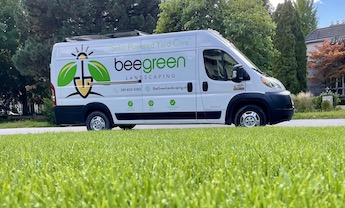Struggling with a lawn more moss than grass? You’re not alone. Moss can take over your garden, leaving you with a green but not the grassy oasis you’ve been dreaming of. It’s a common issue in damp, shaded areas, but don’t worry, there’s a solution. Reseeding your lawn might just be the trick to reclaim your green space. Reseeding a moss covered lawn isn’t as daunting as it sounds. With the right approach, you can transform your garden into a lush, vibrant lawn that’s the envy of the neighbourhood. It’s all about understanding the why behind the moss takeover and tackling it head-on. Ready to get started? Let’s dive into how you can breathe new life into your lawn.
Understanding Moss in Lawns
Before diving into the reseeding process, it’s crucial to grasp why moss has become the dominant feature in your garden. Moss thrives in conditions where grass struggles, indicating underlying issues that need addressing for a successful lawn transformation.
Key Factors Promoting Moss Growth
Several factors contribute to moss taking over your lawn:
- Poor Drainage: Moss loves wet environments. If your lawn is soggy or poorly drained, it becomes a perfect breeding ground for moss.
- Low Soil pH: Grass prefers a slightly acidic to neutral pH, while moss can flourish in more acidic conditions. Testing your soil’s pH can reveal if it’s an inviting environment for moss.
- Shade: Dense shade from trees or buildings limits sunlight, inhibiting grass growth but creating ideal conditions for moss.
- Compacted Soil: Compaction prevents air, nutrients, and water from reaching grass roots, favouring moss development.
- Nutrient-Deficient Soil: A lack of essential nutrients makes it hard for grass to compete with moss.
By understanding these factors, you can take targeted steps to make your garden less hospitable to moss and more conducive to grass. Improving drainage, adjusting soil pH, aerating compacted soil, and ensuring your lawn receives enough sunlight and nutrients are crucial steps before reseeding.
Remember, addressing the root causes of moss invasion is as important as the reseeding process itself. By tackling these issues head-on, you’ll not only prepare your lawn for successful reseeding but also promote healthier, more resilient grass growth in the future.
Reasons for Moss Takeover

Understanding why moss has taken over your lawn is the first crucial step in tackling the issue effectively. Moss loves environments that most grasses find challenging, if not outright hostile. By recognizing these conditions, you’re better equipped to make informed decisions moving forward.
One of the primary reasons for a moss takeover is poor drainage. Waterlogged soil creates a breeding ground for moss, as most types of grass require well-drained soil to thrive. If you’ve noticed puddles forming on your lawn after rain, it’s a clear sign that your drainage needs improvement.
Another critical factor is low soil pH. Grass prefers a neutral to slightly acidic pH, while moss thrives in more acidic conditions. If your soil is too acidic, it’s an open invitation for moss to spread. Testing your soil’s pH can provide valuable insights into its condition and what steps you’ll need to take to correct it.
Shade plays a significant role as well. Moss can flourish in shaded areas where grass struggles to grow due to insufficient sunlight. If your garden has large trees or structures casting shadows over the lawn, it could be contributing to the moss problem.
Compacted soil is yet another issue leading to moss dominance. Over time, soil can become compacted from foot traffic and other activities, making it difficult for grass roots to penetrate and absorb nutrients effectively. This situation creates an ideal scenario for moss to outcompete grass.
Lastly, nutrient-deficient soil can deter grass growth, while moss has less stringent nutritional needs to spread. Ensuring your soil is rich in essential nutrients is key to fostering an environment where grass can thrive over moss.
Addressing these issues is fundamental, not just for reseeding your moss covered lawn but for maintaining its health and vibrancy in the long term. The next steps will involve taking practical measures to modify these conditions in favour of grass, setting the stage for a successful reseeding process.
Preparing for Reseeding a Moss Covered Lawn

Before you embark on the journey of reseeding your moss-covered lawn, it’s crucial to prepare the ground adequately. The success of your reseeding efforts hinges on how well you set the stage for your new grass to take root and flourish.
Firstly, address the issue of moss removal. Moss needs to be cleared from your lawn to give grass seeds the best chance of success. You can achieve this by using a moss killer specifically designed for lawns and following up with a thorough raking to remove dead moss and other debris. This process not only cleans your lawn but also helps to aerate the soil, making it a more hospitable environment for new grass seeds.
Once the lawn is clear of moss, the next step is to test the soil pH. Grass prefers a slightly acidic to neutral pH, typically between 6.0 and 7.0. If your soil test reveals a pH outside this range, you’ll need to adjust it. For acidic soil, liming is effective at raising the pH, whereas sulfur can help lower the pH of alkaline soils.
Improving drainage is another critical step in preparing your lawn for reseeding. Compacted soil and poor drainage are welcoming conditions for moss, but detrimental to grass. Aerating your lawn can alleviate soil compaction, improve water absorption, and enhance root growth. For areas with severe drainage issues, you might need to consider more extensive solutions such as installing a French drain or regrading parts of your garden.
Finally, enriching your soil with the right nutrients is vital. A top dressing of compost or a balanced lawn fertiliser can provide the necessary nutrients that were likely missing and led to moss taking over. This step will not only feed your new grass but also improve the overall soil structure.
By carefully preparing your lawn through these steps, you’re laying the groundwork for a lush, green, and moss-free garden. Remember, patience and diligence are key to transforming your moss-covered lawn into a vibrant outdoor space.
Reseeding Techniques for Moss-Covered Lawns

After you’ve prepared your lawn by clearing moss, balancing the soil pH, and boosting drainage and nutrition, it’s time to delve into the reseeding process. Successful reseeding is pivotal for reviving your lawn and turning it into a lush, vibrant outdoor space.
Firstly, choosing the right seed mix is crucial. Opt for a grass type that’s well-suited to your garden’s environment. If your lawn is shaded, look for shade-tolerant varieties. Similarly, if your garden gets plenty of suns, choose a mix that thrives in sunlight. Understanding your garden’s specific needs ensures your new grass has the best chance of survival.
- Aerate the Soil: Before sowing new seeds, aerating the ground helps improve oxygen circulation and water absorption. Use a garden fork or an aerator to create small holes across the lawn.
- Sow Seeds Evenly: Scatter the seeds evenly across the prepared area. For best results, use a seed spreader to ensure uniform coverage.
- Light Top Dressing: After seeding, apply a thin layer of topsoil or compost. This helps protect the seeds and maintain moisture.
- Water Regularly: Keep the soil consistently moist but not waterlogged. Frequent, light watering promotes germination without washing away the seeds.
- Fertilize: Approximately four to six weeks after germination, apply a gentle fertilizer to support young grass growth. Choose a product that’s suitable for new lawns.
Patience is key throughout this process. It can take several weeks for new seedlings to establish and start competing with any remaining moss. Regular mowing, once the grass reaches an appropriate height, also encourages dense growth, making it harder for moss to re-establish.
Remember, ongoing lawn care is essential for maintaining a healthy, moss-free lawn. Regular feeding, aerating, and overseeding can prevent moss from taking over again. The effort you put into caring for your lawn pays off in the long run, rewarding you with a beautiful, resilient outdoor area that enhances your home and garden.
Maintenance and Care Tips for Reseeded Lawn

Once you’ve tackled reseeding your moss-covered lawn, it’s crucial to shift your focus towards maintenance and care to ensure your newly seeded grass thrives. Embracing proper lawn care practices not only helps in establishing a strong, healthy lawn but also prevents the recurrence of moss.
Watering should be your top priority. Newly seeded lawns require consistent moisture to germinate effectively. Aim to keep the soil lightly moist at all times but avoid overwatering, as this can lead to seed washout or fungal diseases. Typically, watering once or twice a day, depending on the weather, suffices until the seeds germinate. After germination, gradually reduce the frequency but increase the volume of water to encourage deeper root growth.
Mowing plays a pivotal role in the health of your lawn. Wait until your grass reaches about 3 inches before the first mow to avoid uprooting tender seedlings. Always use a sharp blade to ensure a clean cut and mow regularly, but never remove more than a third of the leaf blades at a time to avoid stressing the grass.
Fertilization is essential for the development of your lawn. Approximately six to eight weeks after germination, apply a slow-release nitrogen fertilizer to provide a steady supply of nutrients. This boosts the growth and density of your grass, making it less hospitable for moss to return.
Lastly, Ongoing Moss Prevention strategies are key. Regular aeration helps improve drainage and reduces soil compaction, an environment moss loves. Additionally, overseeding thin areas in the fall can help maintain a dense and vigorous lawn, leaving no room for moss to establish.
By following these maintenance and care tips, you’ll not only enjoy a lush, vibrant lawn but also significantly reduce the chances of moss making an unwelcome return. Remember, consistency in care is the secret to a long-lasting, beautiful lawn.
Conclusion
Achieving a lush, vibrant lawn free from the clutches of moss requires dedication and consistency in your lawn care routine. By adhering to the advice on watering, mowing, and fertilizing, you’re setting the stage for strong, healthy grass that can stand its ground against moss invasion. Don’t overlook the importance of aeration and overseeding as part of your strategy to reseeding a moss covered lawn. These steps are your best defence in maintaining a beautiful, resilient lawn. Remember, the key to success lies in consistent care and attention. With patience and perseverance, you’ll enjoy the rewards of a stunning, moss-free lawn that’s the envy of the neighbourhood.
Frequently Asked Questions (FAQ)
How often should I water a newly seeded lawn?
Water the newly seeded lawn lightly but consistently, ensuring the top inch of soil remains moist. Aim for watering once or twice daily for the first few weeks until seeds have germinated and established.
What is the correct way to mow a lawn after reseeding?
Wait until the new grass reaches at least 3 inches in height before the first mow. Be gentle and use a sharp blade to avoid pulling up tender seedlings. Mow frequently, never removing more than a third of the grass height at a time.
When should I fertilise a lawn after reseeding?
Apply a starter fertiliser at the time of seeding to promote growth. After the grass has established, usually around 6-8 weeks post-seeding, you can start using a regular lawn fertiliser according to the product’s instructions.
What ongoing care strategies prevent moss from returning to the lawn?
Regular aeration to improve soil drainage and reduce soil compaction, overseeding to keep the lawn dense and vibrant, and proper fertilisation and mowing are key practices. Additionally, ensure the lawn receives adequate sunlight by trimming overhanging branches if necessary.
How crucial is consistency in lawn care for preventing moss?
Consistency in lawn care practices is vital. Adequate watering, correct mowing, timely fertilisation, and ongoing moss prevention strategies like aeration and overseeding help maintain a healthy lawn. A consistent care routine reduces moss resurgence and promotes a lush, vibrant lawn.


